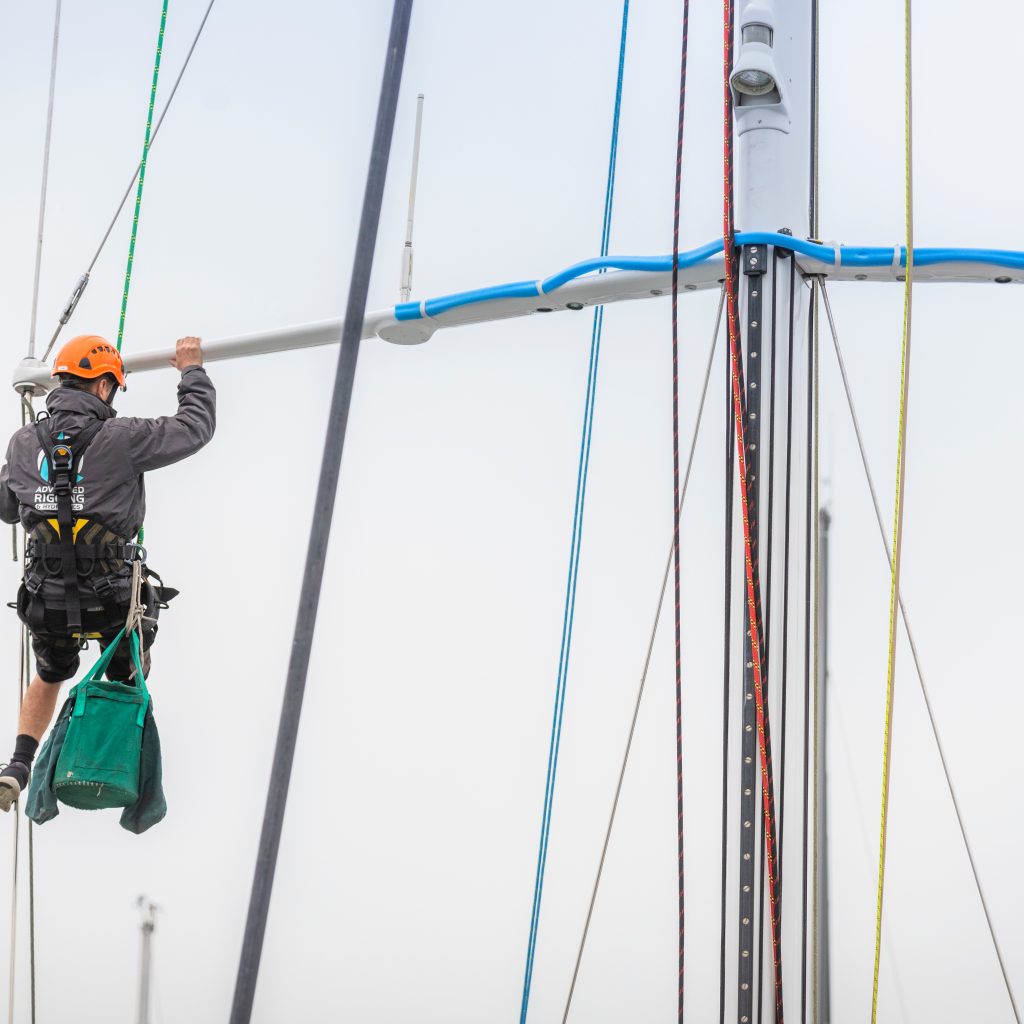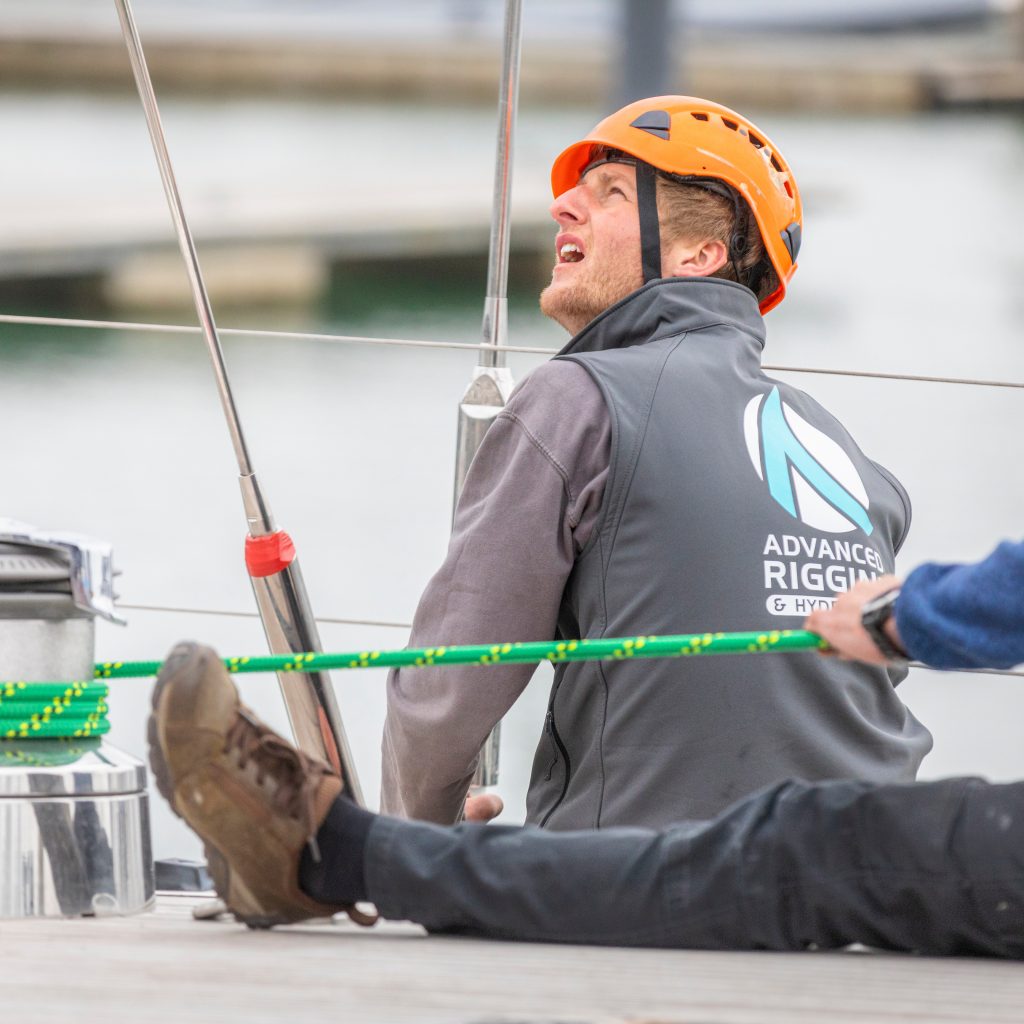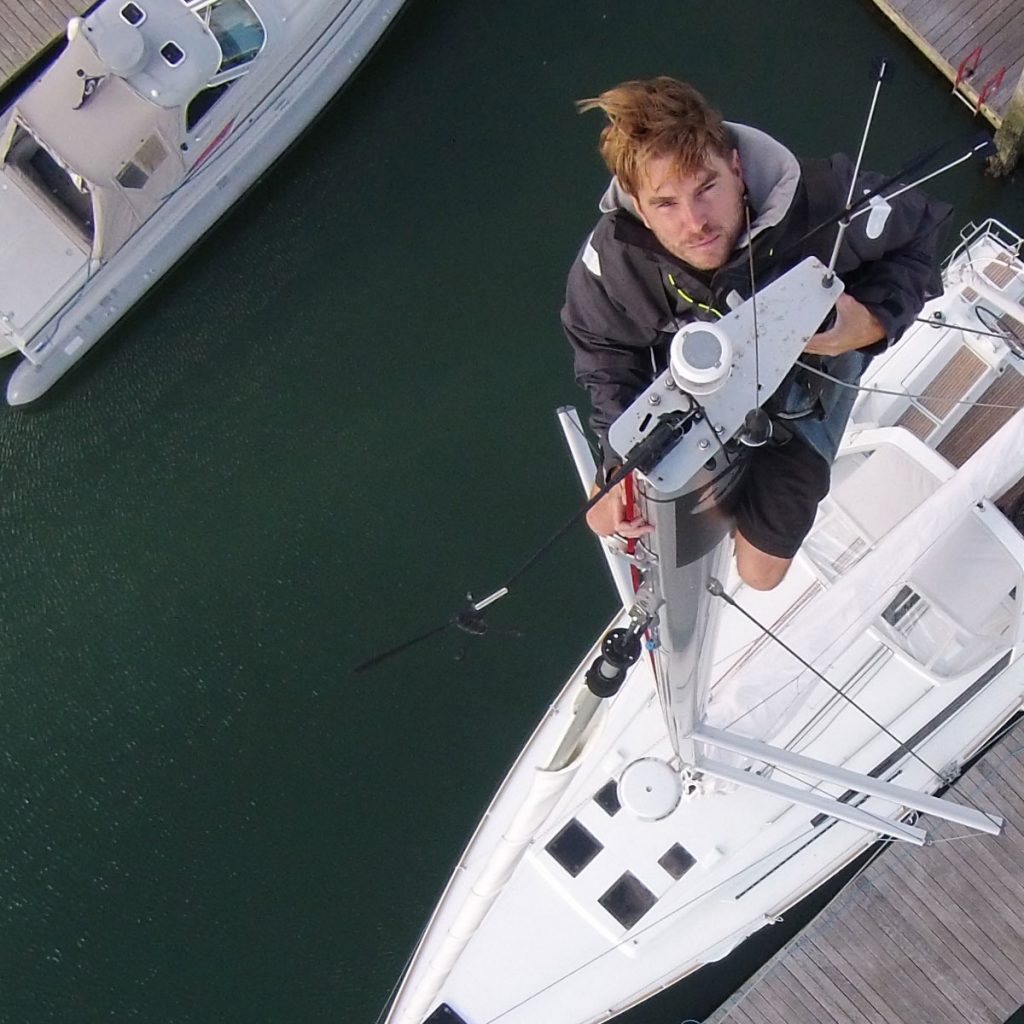Guide to going aloft
At Advanced Rigging & Hydraulics, we’re used to working at heights; going aloft to complete inspections and carry out rig work is a daily occurrence. For many yacht owners, though, it can be a daunting task. Yet it is one that is important for the crew to be familiar with. In most cases, it is sensible to restrict mast climbs to when you’re alongside in port, but, as any experienced sailor will tell you, that is not always an option. Here we look at some top tips for going aloft, but we would always recommend you consult a rigging professional if you’re inexperienced or are unsure about climbing your yacht’s mast.
Check your equipment
First, check you have the right equipment – a high-quality Bosun’s Chair or suitable harness that fits comfortably around the waist and legs. It should be certified to carry the weight of the person going up the rig and obviously in good condition, so check thoroughly for wear and tear even if it is a rarely used item. For going aloft at sea, a harness should be used in preference to a Bosun’s Chair. The harness or chair should be rigged with a safety tether and a load-rated climbing carabiner.
Consider your clothing. Bulky or tight-fitting clothing may be a hindrance when working, and ensure you wear strong footwear. If you are going aloft at sea, or on a windy day in port, consider wearing rubber boots and a helmet for head protection as the motion and movement will be significantly more than you experience on deck.
If you are going aloft to carry out a specific task, ensure you are taking the right tools with you. As pockets in a bosun’s chair can be shallow or non-existent if using a harness, consider securely fastening a canvas bag to the chair. If the bag seals, you should be able to open it with one hand. In the bag, take your essential tools – consider these carefully so as not to overload, but also think about what you may need in order to avoid unnecessary trips. Tools should be attached with lanyards, to prevent them from falling to the deck, which could cause damage to the boat or injury to the crew.
Take a short piece of rope with you, so that you can tie the bosun’s chair or harness to the mast for additional security when you reach the area you are working on.
On deck preparations
This advice assumes you are going aloft with several crew available to assist, and that you’ll use two lines – a primary and a safety line. Professional riggers and those experienced in going aloft may have different preferences and methods and the choice may be limited by the lines available.
Ideally, select halyards that offer the safest possible method to go up the mast – ensure they are in good condition, and if unsure, mouse a new line through, if possible. Ideally, use the ‘lowest’ halyard that will reach the working area. Avoid going aloft on an external halyard that utilises a hanging block, always choose a halyard that passes through (or into) the mast.
Use the two lines, one per winch, and designate a lead wincher for the main number one line and a second line tailer, taking up the slack on the safety line. If available, also have a designated spotter to relay messages or observations to the lead wincher.
When connecting the line to the chair or harness, always use a knot, and never a splice of any kind, or snap, or key shackle. A bowline with a half hitch in the tail to keep the knot from spilling, or another climbing knot could be tied – if the line has a splice, tie the knot several inches up the halyard, since the line will tend to fatigue near the shackle. Tie the knot yourself and ask a second crew member to check it.
Discuss how you and your crew will communicate once you go aloft. The bigger the boat, the more important communication devices become. Perhaps use a hands-free headset on an open mobile phone call and make sure any devices are securely attached and cannot fall. In case of failure, agree on a series of simple and distinguishable hand signals, or knocking on the mast with a tool can be easily heard, with an agreed number of knocks per command.
The ‘Climb’
It can be laborious and time-consuming to manually winch a person up the mast, so the person going aloft can assist by climbing using the same technique as when climbing a rope, and using spreaders for support and steps if they are available. On deck, make sure the clutch is closed during the climb and ensure there are several turns around the winch to prevent the halyard from slipping – the number of turns will depend on the resistance of the winch being used.
When climbing, watch out for protrusions such as radar housings, deck lights, windex, comms systems, etc. It’s very annoying to ascend, fix an issue and then break something else whilst up there! The deck crew should also maintain a good lookout on both the ascent and descent to help direct if needed.
When you reach the “workplace”, fasten yourself to the mast or rigging in such a way that you can move within a circle of about one arm’s length. Work as efficiently as possible, but do not neglect safety and thoroughness. Do not drop anything – remember that a tool dropped from the masthead can punch a hole in the deck or injure a crew member.
Back on deck, the halyards must be securely cleated when the person aloft is in position, even if a self-tailing winch is used. If no cleats are available, use a towing hitch for additional security, and a spotter should always remain on deck.
Returning to deck
Before lowering the person, the line should be checked to ensure that it is free from kinks, that there are several turns around the winch and that the clutch has been opened. When ready, lower at a steady speed using a hand-over-hand technique, preventing riding turns on the winch, and not too slowly. Lowering the climber down with abrupt and jerky motions is a common mistake made by the winch operators which can be uncomfortable and unnerving for the person in the bosun’s chair. Try and keep the process as smooth as possible – again clear communication is key. Spotters should keep a watchful eye for fittings or other projections that may snag on the way down.
On reaching the deck, ensure there is enough slack for the climber to untie themselves comfortably, and ensure lines are correctly stowed once you have finished with them.
Get advice
Do speak to a rigger if you are unsure about going aloft for advice and to talk through how best to achieve the process safely on your boat. Practice is important in a controlled environment in port, so if you do find yourself needing to go aloft at sea you will be familiar with the process and have a plan in place with your crew.
Book a Rig Check
At Advanced Rigging, our mast and rigging inspection service provides a completely impartial overview of the condition of your mast and its standing and running rigging. Rig checks are available for yachts of all sizes and of any age. Contact us at [email protected]
This advice is given in good faith and provided for information only. We thus accept no liability whatsoever for following our guidance.



















